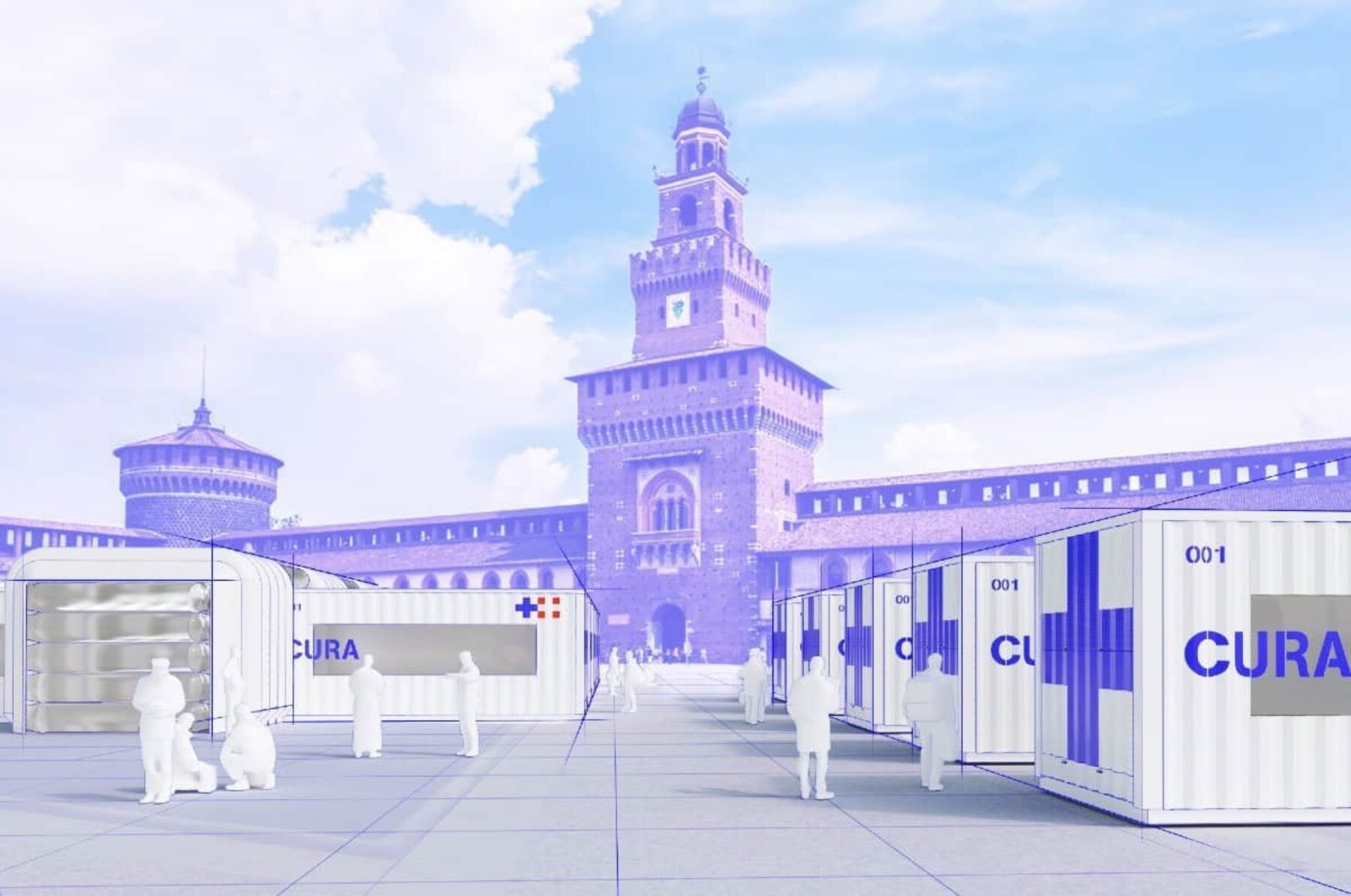A prototype of the design by Italian architect Carlo Ratti is currently under construction in Milan. Plans will be released online on an open source basis and the multi-disciplinary teams hope they will be taken up around the world
As quick to construct as a hospital tent, yet as safe as an isolation ward: the design is tailored to meet the challenges being faced by health services around the world right now.
As the Covid-19 virus was declared a pandemic, Italian US-based architect Carlo Ratti quickly realised that countries would need to urgently expand their intensive care capacity.He assembled an international taskforce of designers, engineers, medical professionals, and military experts to design Cura (Connected Units for Respiratory Ailments): an intensive care unit inside a 20-foot shipping container.
The design repurposes shipping containers to create plug-in biocontainment pods that can be quickly deployed in cities around the world. The first prototype of Cura, the name for which is also “cure” in Latin, is currently being built at a hospital in Milan, one of the pandemic’s epicentres.
Individual pods are connected by an inflatable structure to create multiple modular configurations, ranging from four beds to more than 40, which can be deployed in just a few hours. Pods can be placed near hospitals, for example in car parks, to expand the ICU capacity, or to create self-standing field hospitals.
Video: Squint/Opera
In recent weeks hospitals in the countries most affected by the new coronavirus, from China and Italy to Spain and the US, have been struggling to increase their ICU capacity to admit a growing number of patients with severe respiratory diseases. The response to the emergency in China and Italy so far has been to set up makeshift emergency hospitals such as tents, or build new prefabricated wards with biocontainment.
“While the latter option is time and resource-intensive, the former exposes medical professionals to a higher risk of contamination and adds operational strain, especially in the long run,” explained Ratti.
The first prototype of Cura is currently being built at a hospital in Milan, one of the pandemic’s epicentres
Learning from both approaches, Cura strives to be as fast to mount as a hospital tent, but as safe as a hospital’s isolation ward to work in, thanks to biocontainment. An extractor creates indoor negative pressure, complying with the standards of Airborne Infection Isolation Rooms.”
Ratti estimates that each two-bed pod can be produced for around $100,000 (£80,000), including all medical equipment. This is around a third of the pre-bed cost of an emergency prefabricated hospital.
Cura has been developed in an open-source, non-for-profit framework and the team welcomes suggestions and improvements to the design.
Find out more here
Image: www.curapods.org




